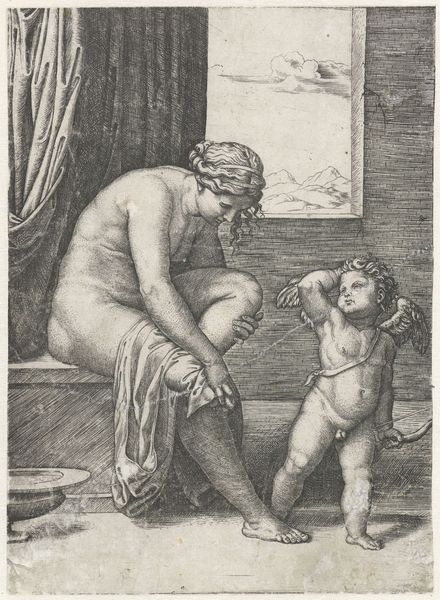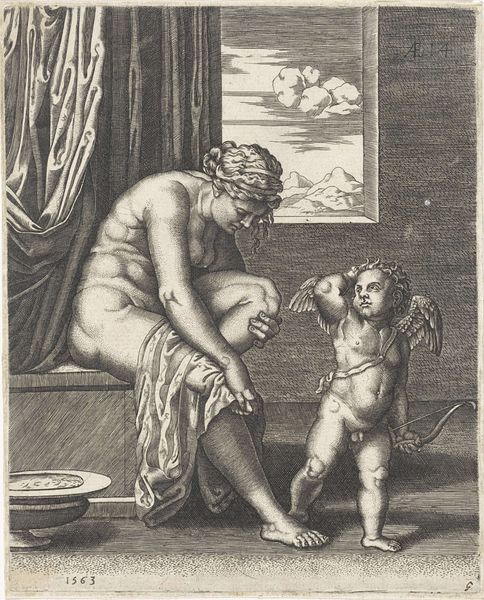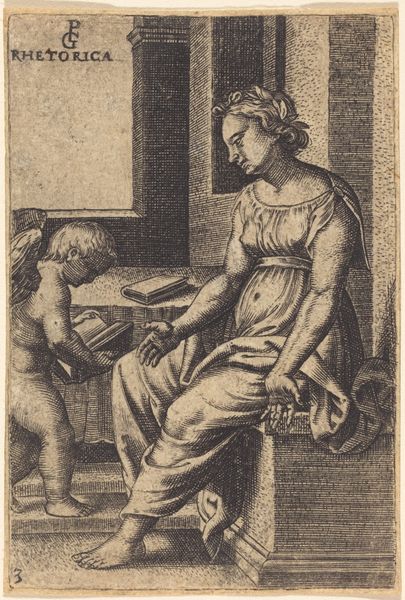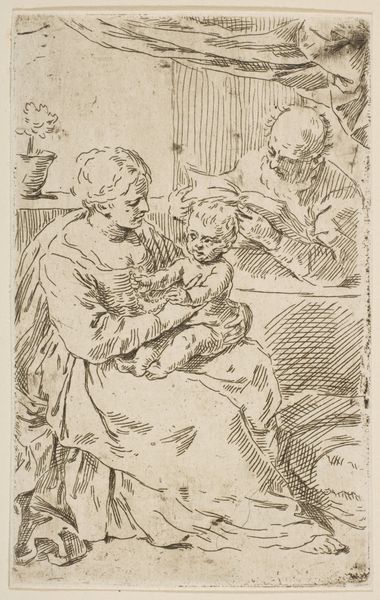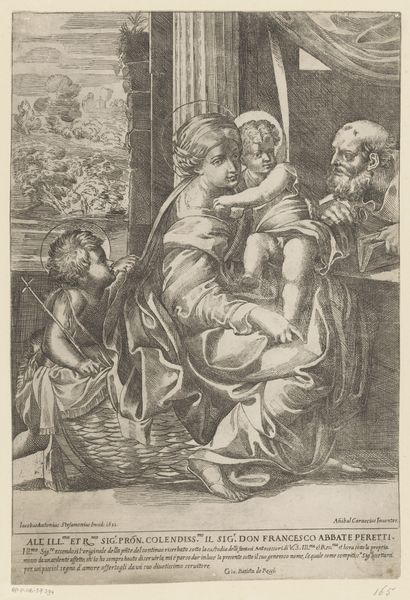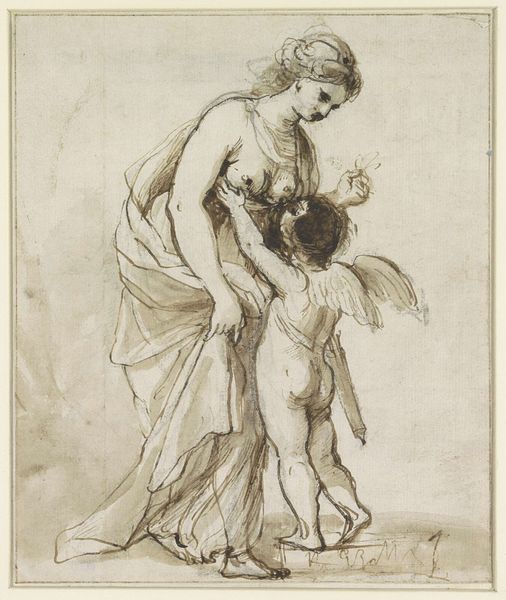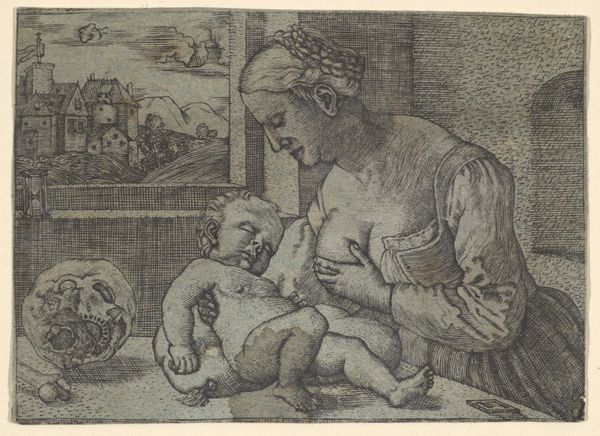
Venus drying her foot with a piece of drapery, Cupid in front of her, holding a bow in his left hand 1505 - 1515
0:00
0:00
Dimensions: Sheet: 6 7/8 × 5 3/8 in. (17.4 × 13.6 cm)
Copyright: Public Domain
Editor: So, this is Marcantonio Raimondi’s "Venus drying her foot with a piece of drapery, Cupid in front of her, holding a bow in his left hand," made between 1505 and 1515. It's an engraving. I'm immediately struck by the intimate and casual nature of the scene, especially considering its classical subject matter. What do you see in this work? Curator: Beyond the immediate classical allusion, I think it’s critical to consider this piece through the lens of its historical context. Mannerism, with its heightened stylization, offers us insight into shifting social attitudes of the Renaissance. Here we have Venus in a domestic sphere; we must examine how gender and sexuality intersect in Renaissance society. How do you read Cupid’s role in that? Editor: I guess he seems less like a powerful god of love and more like... a child, almost an accessory to Venus? It's an interesting shift in power dynamics. Curator: Exactly. Think about the male gaze inherent in depicting the female nude, particularly a goddess. Yet, Raimondi also hints at Venus’ agency. What does it mean to depict a goddess in this unguarded, seemingly mundane moment of self-care? Consider, too, how this image would have been consumed – by whom, and what power structures are at play. Is it objectification, celebration, or something in between? Editor: So, it’s not just about appreciating the beauty of the image but also understanding the social commentary it makes, or even reveals unintentionally? Curator: Precisely! It allows us to question the accepted norms and consider alternative interpretations that empower female representation, for example, thinking about female consumers/audiences too. Editor: This makes me see the engraving in a completely different light, not just as a classical scene but as a piece deeply embedded in the socio-political fabric of its time. Curator: And by acknowledging that, we unlock the real power of art history. I always find something that I missed previously!
Comments
No comments
Be the first to comment and join the conversation on the ultimate creative platform.
